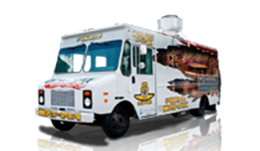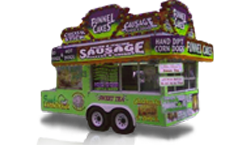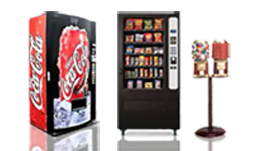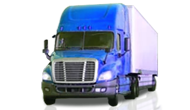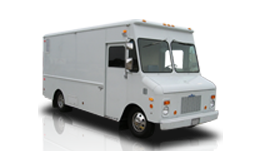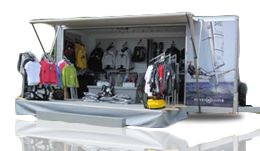How to Set Financial Goals for Your Day Cab Truck Business

The trucking industry has been fairly competitive for several years. Today, it’s even a vital element for industrial recovery. Yet many day cab truck businesses failed. Such an outcome happens because of the lack of financial goals. Some owners are good truck drivers but don’t know how to run and grow a trucking business. Here are tips on how to set financial goals for your day cab truck business.
What’s Inside
Find the right niche
A successful day cab truck business supports the right niche. Day cabs work best for short hauls and multi-stop deliveries. A rule of thumb is to focus on clients which large carrier companies commonly avoid. This means focusing to haul specialized loads. As such, you don’t need to compete with bigger competitors. At the same time, you can make a decent revenue per day cab’s journey. A stable niche to target is the delivery of fresh produce and meats. They are recession-resistant and are in-demand all year round. A pro-tip in finding the right niche for a day cab truck business is to look for areas you’ve been passionate about for around five years. Being passionate about your business makes a big difference.
Charge the right rate
The best way to determine the rate you can charge for a day cab business is to do research. Check with fellow day cab trucking businesses how much they charge per mile or trip. You can also canvass the rates using a load board. Search for 10 loads routing in a specific direction. Call the brokers and verify how much they are going to pay for each specific load. Add the whole amount of the 10 loads and divide the sum by 10 to get the average rate. From the average rate, add 10% to 15% to allow an amount for brokers. Repeat the same process by researching the opposite route. This is to give you an idea of the right rate to charge for a day cab truck’s round trip. Remember, the best rate for a day cab truck business should be high enough to pay the operation cost and give you a reasonable profit. At the same time, it should also be competitive enough to encourage the loyalty of regular clients.
Estimate your operating costs
The first step to appraising your operating cost is to list down your fixed costs. Fixed cost remains the same no matter how many trips a day cab truck traveled. These include insurance, licenses, maintenance, permits, and truck financing payments, etc. Divide the total fixed cost by 365 to get your daily fixed cost.
Next is to find out your variable cost. Your variable cost depends on the number of miles a day cab truck has to cover. You should know how much gasoline your day cab consumes per mile. You should also account for the driver’s pay, food expenses, parking fees, etc. per trip. Short-haul day cab trucks commonly travel 150 to 250 miles daily. So, you can multiply your gas expenses per mile with 200 being the median daily mileage. Add your possible driver’s pay, food expenses, parking fees, and other miscellaneous fees. The sum is your daily variable cost.
Add your daily fixed cost to your daily variable cost to get your “all-in-cost” per day. Use the rate per mile you got from step number two and multiply it by 200. Subtract your “all-in-cost” per day from the product to know how much profit you will possibly earn daily.
Use a cost-efficient fuel-buying strategy
A large cost for a day cab truck business is fuel. The owner of a day cab truck business should be aware that truck drivers deal with the International Fuel Tax Agreement (IFTA). They are not like regular drivers paying fuel taxes on the state where the fuel is bought. Day cab truck drivers pay taxes based on the fuel they consumed regardless of where they bought. Thus, a cost-efficient fuel buying strategy is to look for fuel with the cheapest base price or pre-tax price rather than the cheapest pump price.
Here’s an example.
The cost of a gallon of fuel in Illinois is around $3.399 with a base price of $2.972 + a sales tax of $0.427.
The cost of a gallon of fuel in Missouri is around $3.259 with a base price of $3.089 + a sales tax of $0.170.
Most day cab truck owners will buy fuel with the cheaper pump price in Missouri. This is wrong. At the end of the year, your fuel taxes will be computed based on the pre-tax price, so you’ll be charged higher taxes with the higher base price of the fuel in Missouri.
Try to avoid cash flow problems
The best way to achieve the financial goals of a day cab truck business is by avoiding a cash-flow problem. First, you should have a record of all your incoming and outgoing funds labeled specifically. Such a record can give you an idea of how your business is doing at a glance. Second, opt for quick pay clients. Try to get brokers and shippers who settle their bills within 15 to 30 days. A 45-day invoice payment may delay funds coming into your bank account and may cause a problem in your cash flow. Another way to improve cash flow is to take advantage of fuel advances and purchase order tie-ups with fuel suppliers.
Work directly with shippers
Clients of a day cab truck business consist of brokers, local manufacturers or sellers, and shippers. Brokers can help you maximize your trip by finding a load for your empty truck. But they are also expensive because of the broker’s fee. So, it’s best to focus on building a list of direct clients and shippers. Charge them with a competitive rate as brokers do. If possible, you can create an incentive plan for regular clients to promote loyalty.
All in all, it takes a lot of accounting and researching to set financial goals for your day cab truck business. But it pays with a great amount of profit.
Setting financial goals is the first step to grow your trucking business. When you have finally achieved them, you can expand your business even further. For that, check out this list of semi trucks for sale. We can help you grow your business with our totally amazing day cab trucks, sleeper cabs, dump trucks and more!
Unlock massive opportunities in the trucking industry with UsedVending.


